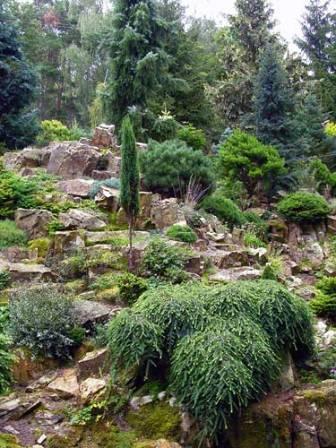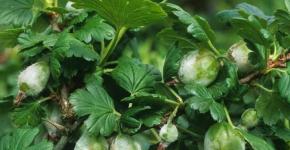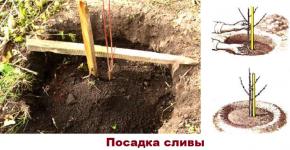Dwarf conifers: all the charm of miniature forms
It is no longer uncommon to meet coniferous trees and shrubs in summer cottages. For a better understanding of the topic, let us explain that dwarf forms include plants whose height in an adult state is less than 3.6 m, or they add in growth so slowly that they reach maturity after more than a dozen years. Let's talk about these "babies".
What attracts dwarf conifers
Breeders from different countries have made a lot of effort to breed as many conifers as possible. Their efforts did not go to waste, and now there is an impressive variety of ornamental conifers, among which you can find varieties with regular geometric shapes and bizarre growth anomalies, with needles not only green, but also yellow, golden, bluish and silver. Such an interesting direction as the selection and breeding of dwarf coniferous species, characterized by miniature sizes and slow growth rates, was not left unattended.
Dwarf variations were found in a large number of coniferous plant species: pine, juniper, yew, etc. The unusual miniature size gives rise to interest in such plants, because we are all more accustomed to seeing coniferous giants tens of meters high. What is fascinating about dwarf conifers is that, according to other characteristics, in addition to size, they exactly copy their full-sized relatives. Another advantage of conifers due to their compactness is that much less space is required for their planting. Therefore, some gardeners even collect different types of conifers in their dwarf varieties.
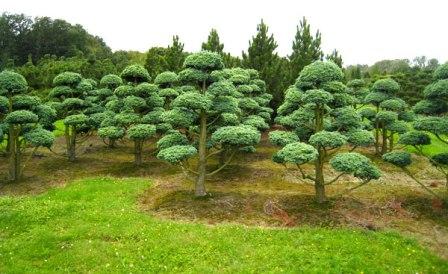
Dwarf conifers appeared in our gardens relatively recently, but they quickly fell in love with many gardeners. At the same time, there were certain mistakes in their breeding, associated with a misunderstanding of what place they should be given in the garden. The reason lay in the fact that under the concept of "dwarf conifers" different species were combined, which were very different in growth rates, which is why it often turned out that one dwarf species grew by 2-3 cm during the year, and the other by a couple of tens of centimeters. Naturally, due to such a difference in growth, the originally planned plantings lost their intended outlines over time, and there was a need for new transplants and redevelopments.
Unfortunately, the tendency of inaccurate use of concepts continues to this day, both in the literature and among sellers.
The classification of dwarf varieties according to the themes of their growth, which is so important for the device of harmonious landscape design, has already been created, but so far not everyone uses it.
Dutch gardeners dealing with the problem of classifying dwarf conifers suggested subdivide them into:
- full-grown, which can grow more than 30 cm per year, and at the age of 10 reach a height of 3 m;
- medium-sized and semi-dwarf with an average annual growth of 15-30 cm -
- dwarfs (dwarf), characterized by an average annual growth of 8-15 cm
- mini-dwarfs with an increase of approx. 3-8 cm per year
- microdwarfs with an annual growth rate of no more than 3 cm.
General recommendation: first find out everything about the dwarf, then buy and plant. The main sources of information for you will be a sales assistant, the Internet, advice from friends who have experience with dwarf conifers. If from these sources the necessary information is insufficient, then it remains to rely on a visual inspection of the plant and examination of the label. By eye, you can try to determine the growth rate of the past and current year in the guide, or in the lateral shoots. Also DachaDecor.ru advises to take a closer look at the label. A good label indicates the genus, species, variety, plants - in Latin it certainly should be. Ideally, the nursery in which the plant was grown is also indicated.
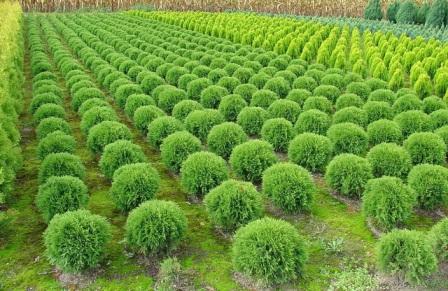
In order to choose the right dwarf coniferous tree for your garden, it is recommended to determine to which category of the above classification the seedling you like belongs to. Knowing what shape of the crown is typical for this species, it will be easier to estimate the parameters of the tree in a few years and, taking this into account, choose a suitable place for it in the landscape of your garden.
Dwarf conifers: planting and landscape design issues
Composing a harmonious composition of dwarf conifers is not so easy: you have to take into account not only aesthetic and spatial requirements, but also find the right place for each tree, taking into account its potential size and growth rate. Therefore, it is precisely on what the seedling will become in a few years, and you need to be guided. Using information about the average annual growth of dwarf conifers planted on the site, you have to calculate what diameter the seedling will be after 5, 10 or even 15 years, how much it will increase in height and width.
A particularly careful approach is required when planting mini- and microdwarfs. Their modest size makes it possible to include them in a composition, a rocky garden or a slide. In general, dwarf conifers always look harmoniously against a rocky background, miniature green spaces enliven the harsh rocky landscape. The group of dwarf conifers is very aesthetically advantageous if the ground beneath is covered with pine bark.
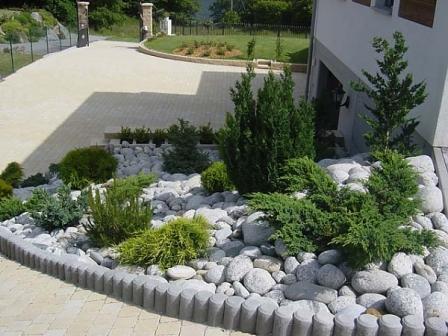
Descriptions of some popular coniferous dwarfs
Below we describe several popular dwarf conifers that can be great for decorating your garden.
Mountain pine is the record holder for the number of dwarf forms, the most famous varieties are "Gnom" "Mops", "Winter Gold", there are many varieties with a dense crown in the shape of a ball and unique microdwarfs - "Frodo", "Kaktus", "Mini Mini". Almost all soils are suitable for pine and its dwarf forms.
Balsam fir "Hudsonia" is also a very interesting dwarf plant, no more than 30 cm high and a crown up to 60 cm in diameter. It grows very slowly and has a pleasant aroma. Ideal for small gardens.
Juniper scaly "Meyeri" - another juniper-dwarf with parameters 90 cm x 60 cm.
Quite shaggy, but immediately catches the eye. Cold blue color.
Sometimes brownish spots appear on adult specimens, which are recommended to be cut off.
Canadian spruce "Konica" is a rather large plant for a dwarf form (120 cm x 60 cm). One of the most popular varieties of conifers. Differs in a strict conical shape, which does not lose over time. The needles on new shoots have a pleasant bright green hue.
Menzies' pseudo-slug "Fletchery" is not the smallest coniferous dwarf plant (90cm x 150cm).
The needles of the needles are colored blue-green, the bark is furrowed, the top is flat.
Canadian hemlock "Pendula" is a winter-hardy dwarf conifer, the term "Pendula" in the name indicates that it belongs to weeping forms, therefore it looks especially impressive when its branches hang from the wall.
Thuja western “Herts Midget - but this is a very miniature plant (30 cm x 30 cm) It grows in the form of a dense ball with soft needles. Perfect for a small garden area and will feel good in not very dense shade.
Thuja western "Reingold" - another variety of thuja, but larger (90 cm x 90 cm). The plant looks like its branches were combed upward, due to which the spherical shape was transformed into a conical one. Oh, she will.
The rich golden color of the needles in the fall begins to cast bronze.

